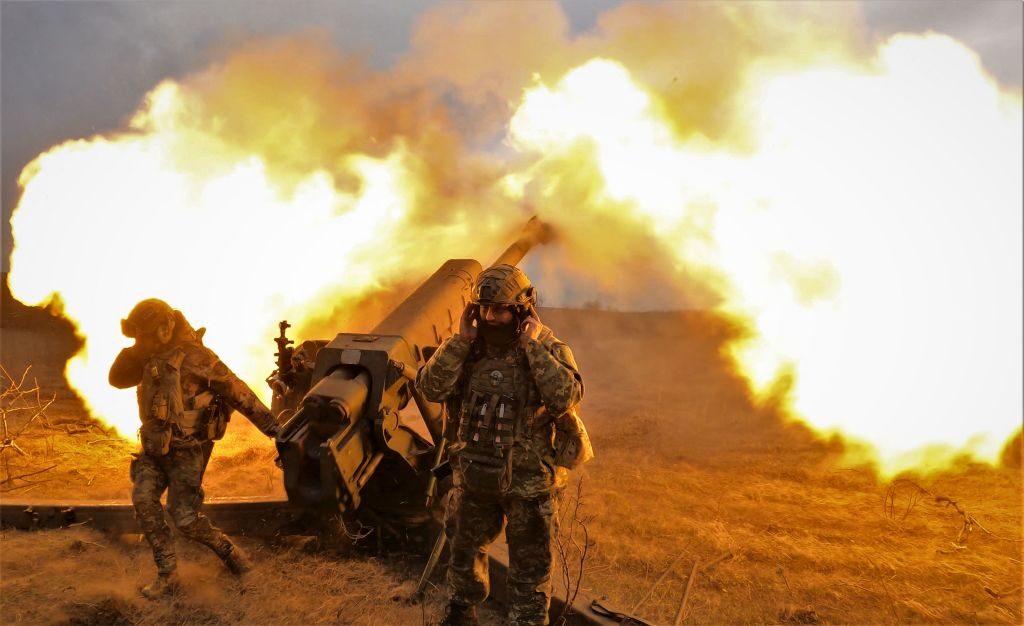The U.S. can’t produce heavy munitions fast enough to meet Ukraine’s seemingly insatiable demand, putting unprecedented pressure on manufacturing capabilities while running down existing reserve stocks.
A report Sunday by AP details the the Scranton Army Ammunition Plant leads a multibillion-dollar Pentagon plan to modernize and accelerate its production of ammunition and equipment not only to support Ukraine, but to be ready for a potential conflict with China.
Trouble is demand is outstripping supply.
The invasion of Ukraine drained the U.S. stockpile of 155 mm shells and those of European allies leaving them were unprepared to support a major and ongoing conventional land war.
Analysts were warning of the impending supply side issues last year but only now are they becoming of more immediate – and public – concern.
The dwindling supply has alarmed Pentagon planners and the Army now plans to spend billions on munitions plants around the country in what it calls its most significant transformation in 40 years.
So far, the U.S. has provided more than $35 billion in weapons and equipment to Ukraine, as Breitbart News reported.
Ammunition for High Mobility Artillery Rocket Systems, precision aerial bombs, TOW guided missile systems, AT-4 anti-armor weapons systems, anti-tank mines and demolition munitions, have all been pulled from Pentagon stocks to expedite delivery to Ukraine’s front lines.

Ukrainian servicemen fire with a D-30 howitzer at Russian positions near Bakhmut, eastern Ukraine, on March 21, 2023, amid the Russian invasion of Ukraine. (SERGEY SHESTAK/AFP via Getty Images)
The assistance is derived from the Presidential Drawdown Authority, which allows the president to draw assistance from existing stocks of U.S. weapons.
The 155 mm shell is one of the most often-requested and supplied items alongside advanced air defense systems, long-range missiles and tanks.
The rounds, used in howitzer systems, are critical to Ukraine’s fight because they allow the Ukrainians to hit Russian targets up to 20 miles away with a highly explosive munition, AP sets out.

An 155 mm M795 artillery projectile during the manufacturing process at the Scranton Army Ammunition Plant in Scranton, Pa., Thursday, April 13, 2023. One of the most important munitions of the Ukraine war comes from a historic factory in this city built by coal barons, where tons of steel rods are brought in by train to be forged into the artillery shells Kyiv can’t get enough of — and that the U.S. can’t produce fast enough. (AP Photo/Matt Rourke)
“Unfortunately, we understand that the production is very limited and it’s been more than a year of war,” Ukraine parliamentary member Oleksandra Ustinova said at a German Marshall Fund media roundtable in Washington on Monday. “But unfortunately we are very dependent on 155.” the AP reports then makes clear the trouble that lies on the horizon:
But even with higher near-term production rates, the U.S. cannot replenish its stockpile or catch up to the usage pace in Ukraine, where officials estimate that the Ukrainian military is firing 6,000 to 8,000 shells per day.
In other words, two days’ worth of shells fired by Ukraine equates to the United States’ monthly pre-war production figure.
Even as the Pentagon struggles to sustain supply it is being forced to look at existing stockpiles elsewhere in the world simply to keep up, a fact the White house has previously acknowledged.
WATCH — White House: Ukraine Aid Has Depleted Weapons Stocks ‘Quite a Bit’
As Breitbart News reported in January, the Pentagon has admitted it was raiding its weapons stockpiles in other countries.
Deputy Defense Press Secretary Sabrina Singh said the Pentagon was taking weapons from its stockpiles in Israel and South Korea to meet weapons demand in Ukraine’s war with Russia.
“We are supplying Ukraine pretty regularly with different ammunitions, materials, capabilities and equipment, and part of that is making sure that we can do so quickly. And we have been working with [Republic of Korea] and Israel when it comes to withdrawing from our stocks and communicating that with them,” Deputy Defense Press Secretary Sabrina Singh said.

COMMENTS
Please let us know if you're having issues with commenting.